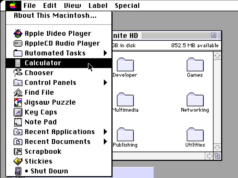
Every gardener, from the apartment dweller to the farmer, has a finite allotment of planting space. What you want to grow needs to fit into that space, so planning is essential. With planning, you can thoughtfully consider when different crops will be ready to harvest and can be rotated. Your plants can benefit from being next to certain plants, and kept away from others. Most importantly, you will avoid the age-old problem of endlessly turning in a circle, in the middle of your garden, holding some starts that you have no idea where to plant.
Block planting
We all grew up with the idea of farms, with long rows or entire fields dedicated to one crop. For the farmer, this is efficient. Load up seeds, plant them all at once, fertilize for them specifically, harvest at once and move on to the next crop. That’s less realistic in a home garden, where you have finite space. A small scale version of this, block planting, allows you to envision your crops in the square spaces they need for a singular planting, and to rearrange them around your garden like legos. Block planting is great for people who enjoy straight lines and color blocks. It will end up looking quite orderly and means you can plan for trellising and any other supports your plants might need.
One major proponent of this method that I’ve studied from is Meg Cowden, author of Plant, Grow, Harvest, Repeat. Though her garden is vast, she has, over time, figured out how big a “block” she needs for cabbage vs, tomatoes vs. corn. She can use those block sizes to help her slot in where in her garden these items will go, allowing for crop rotation. Then she moves trellises to the appropriate spot. The effect is mesmerizing and, clearly, effective. It means you can harvest a whole block at once and turn it over, efficiently, for the next growing season. Early lettuce harvest make way for another short crop at the end of the season. While farmers might be more strict, Cowden still intermixes to some degree—flowers make an appearance at the end of rows; root crops are interplanted with above-ground crops to make efficient use of the space. But for the most part, Cowden’s garden is a wonderful example of incredibly experienced block planting.

Credit: Meg Cowden, @seedtofork
The downside of block planting is that it does feel like it requires more space. Also, if there’s disease or pests, you’re making that one crop more vulnerable by placing it all in one spot. It’s more likely to all be ready to harvest at once, since it’s under the same conditions. Do you want 12 heads of broccoli at once?
To plan your garden using this method, start by making a list of all the plants you intend to grow, and then break that into varieties. Consider how much space each plant needs, and then how many you intend to grow. This will give you the block space. A boring but incredibly helpful task is to map out your garden space accurately with a tape measure. I have mine digitized so I can print out blanks whenever I want. Once you’ve done this, you can start putting blocks into the map. Try to rotate them from previous years for the sake of soil health and keeping viruses at bay. Try to consider sight lines—you don’t want corn to block sun for plants around it, and you want your beans someplace where they’re accessible on all sides. Think about what will need trellises.

Credit: Amanda Blum
Companion planting
Some animals are prone to naturally get along, while others do not. Some animals actually benefit from living in the same space. That symbiotic relationship can be seen in gardening as well. Tomatoes and onions grow well together, as do cabbage and nasturtium, and cucumbers and beans. However, tomatoes and broccoli do not, neither do cabbage and eggplant, and poor fennel—it repels everything else in the garden. This concept is known as “companion planting,” and it feeds off the notion that interplanting helps deter pests, encourage more growth and take optimal advantage of the growing space. While it’s now a very popular idea, it has its roots as far back as we know. Native people grew plants in an arrangement known as “three sisters.” Corn, a known nitrogen hog, was grown alongside beans, which are nitrogen fixers (they put nitrogen back into the soil as they grow). Squash are grown around them. The beans grow up the corn, using it as a trellis, and the squash shades the corn plants, particularly at the base, where the shallow corn roots are susceptible to dehydration, burn and pests. The kitchen potager—a French idea of a kitchen garden—uses the same ideas. Interplant flowers, herbs and vegetables for a fuller space, and one where plants benefit from each other.
The downsides are that you tend to crowd plants together—”crowdscaping,” as gardeners with little space know it. Also, you have to patrol the garden to remember where everything is, and to not miss the harvest period. Heads of lettuce might hide, or you can miss some cucumbers. However, you generally have a far more resilient garden.
To get started with this method, you should still map your garden. Additionally, grab a companion planting chart. Over time, you’ll learn this and won’t need to refer back, but they’re tremendously helpful at the start. This is by far the most comprehensive chart I’ve ever seen, and it’s the one I use.
It helps to consider most vegetables as being within one of two families: cruciferous and nightshades. Broccoli, cauliflower, cabbage, and Brussels sprouts are all cruciferous and grow well together. Nightshades include tomatoes, peppers, eggplants and potatoes. These two groups don’t grow well together, so they should be separated. However, there are interlopers that can grow with either, like lettuce, carrots, radishes, beans, corn, cucumbers and peas. Consider that you can have crops that grow above ground, like eggplant, grow alongside those below ground, like carrots and radishes.
To start, I lay in beans or peas in most of my beds, as these will fix the nitrogen in the soil. Next, I figure out where certain crops I’ll plant together go. A tomato bed and corn gets its own space because it only grows effectively in blocks, so it can get pollinated by wind. I have a small bed for fennel, which cannot be planted with any other vegetable. Next, I look at the trellises, and start laying in cucumbers and pumpkins and squash. After that, i start establishing which beds will hold nightshades, which usually need more heat, and where my broccoli and cauliflower will go. Then, I intersperse everything else: lettuce and radishes and beets and onions and carrots and herbs.
Finally, I take great care to ensure the entire garden is dotted with marigolds, dill, sweet alyssum and nasturtiums, which all work as pest control and pollination attractors.
The author in her garden in 2022, using companion planting.
You can break the rules
As I noted above, in both systems, there are no garden police—you can keep what you want and leave the rest. Within block planting you can still intersperse beneficial flowers or crops. Within companion planting, you can still establish dedicated spaces. What both systems offer are starting points—because garden planning can be overwhelming.








